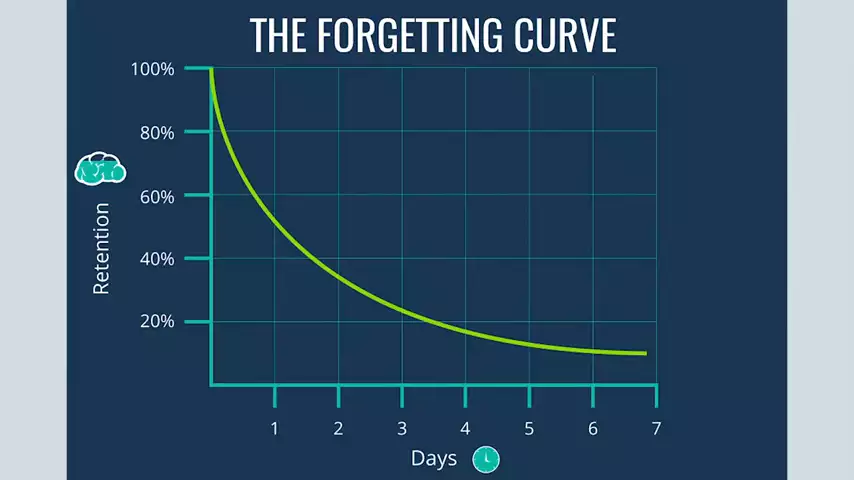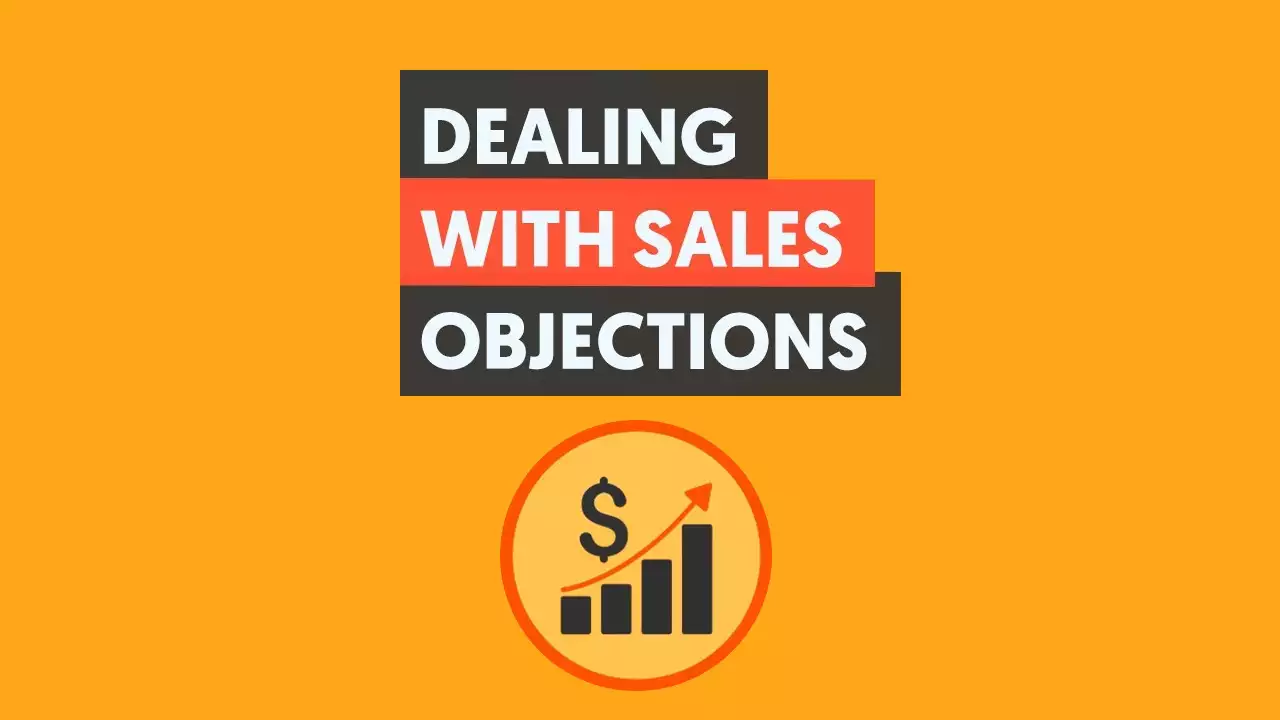There are several reasons why a prospect can tell you, "Let me think about it." And if you read this article, you'll have a good understanding of these reasons and how to overcome their objections and close the sale as effectively as you can.
Once a customer walks out your door, do you think they're going to really come back and buy? The chances are slim to none. Odds are they're not going to even give it a second chance, and they're going to go somewhere else or not go anywhere at all.
In just one hour, people have already forgotten 50% of what you said. Make that 24 hours, people have already forgotten 75% of what you said. In 30 days, the customer has forgotten 90% of what you said.
Just look at the forgetting curve chart.
To make matters worse, the 10% they actually do recall is 50% inaccurate. Just like that, all the work that you put into that perfect pitch has gone right down the drain. So what you want to do is avoiding that let me think about it objection.
When someone tells me that they're going to think about it, it either means two things, they're not interested at all, or they're interested, but they're just not sure. So it's like which one is it? You're going to be giving them an option. You need to really figure out which one it is so you can help give them the answer they need to make that decision.
If they're just not interested, then you're done. The only thing you can do is ask, "Why aren't you interested?" And this will give you feedback so that way you can continually adjust your approach. This is super important. It could be that you're wasting your time selling to the wrong person. It could just be that the way you've explained your message is just super confusing, that that way they're not interested, and there's some mishap in communication that's causing some issues.
Sometimes they're like, "Hey, I'm interested, "but I'm not just sure." So what I like doing when they end up telling me that they're not sure, I ask them, "Why aren't you sure? "What's your biggest concern?" When you figure out what their concern is, it typically falls into one of these three reasons. It's either not a fit for them, or it's functioning not there, or it's financially related.
If you're not sure if the product's a fit, just ask them, "Hey, does it fit your needs?" They're going to probably tell you, "Yeah, it does fit my needs." If it's not, then again, you're done and then you can save your time. If they say, "Hey, what about functionality" right, if there's something there that it doesn't have, well, you can go into, "Hey, we can create these features for you," or you can break down why they don't need it and those features are a waste of time. Or if you find out that you need those features and you just don't have it, you can either tell them when you're going to add those features or how your solution to plug in with other companies who also offer that feature, so that way in theory you can solve all their problems with your product by tacking on another solution from another provider.
That's why in the tech world you see all these integrations. People integrate because they know their product doesn't solve all problems, but by integrating with others, you can. And this helps you re-engage a conversation and get them over the line.
If you're not missing any features, well in that case the chances are it's usually going to be financially related. You can introduce payment options, whether it's paying in 30, 60 or 90 days, or adjusting the feature set to reduce the pricing, so that way they can afford what you're selling them. Or sometimes it's a key stakeholder who may not be there, right, you may not be talking to the right person. You need to go up the chain because once you can talk to the right person, you can get them over the board. And usually when it's financially related, if you can show how your product or service can help them make more money, it's easier to get them over that hurdle, or if you can teach them how it can save them time or money, that's another way of getting them over the hurdle as well.
Another thing that you want to do when it comes to pricing is you want to go find other people within the company, talk to them as well where there's not just the decision maker, the leader, but other people within their organization and their department. The more people you can get on board to like your product or service, the more people you can get excited, and there's also a higher chance that they're going to say yes. In that case, what you want to do is ask them, "Is there anyone who might be on the fence "that I can speak with? "Or is there anyone within your organization or department "that's also going to be using this product or service "that I can talk to and share "how this can help them do their job better?"
So if you follow all those points, what'll happen is yeah, you're not just going to convince someone to buy your product or service using some sleazy sales line. Instead, you're going to be going through the main objections that people have, so that way you can get them over and convince them to end up converting into a customer. That's the approach I like using. It's all about logic. Sales is not just about emotion. When you take people through those logical steps, it's easier to get them over that hurdle and over that line, especially when you're dealing with more expensive products.


No comments yet